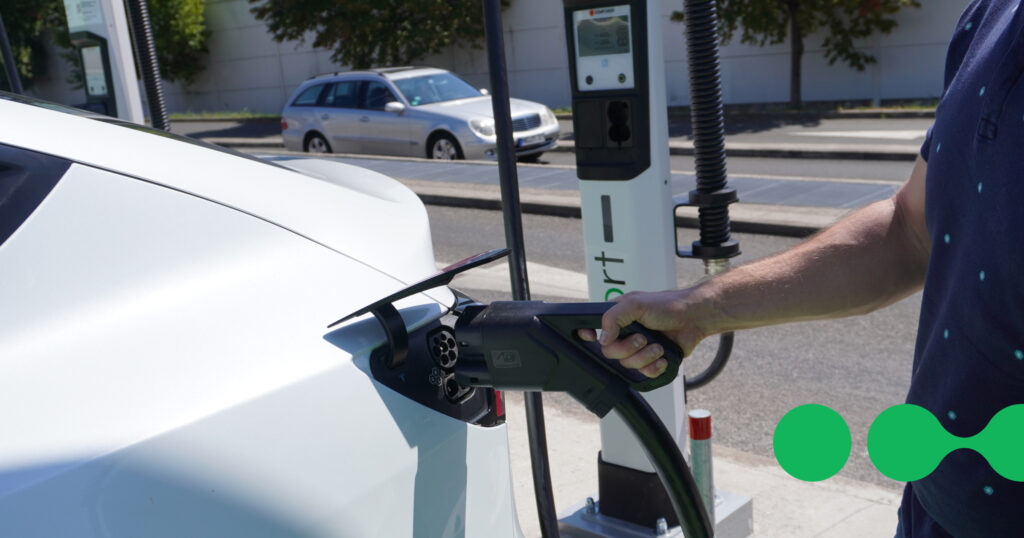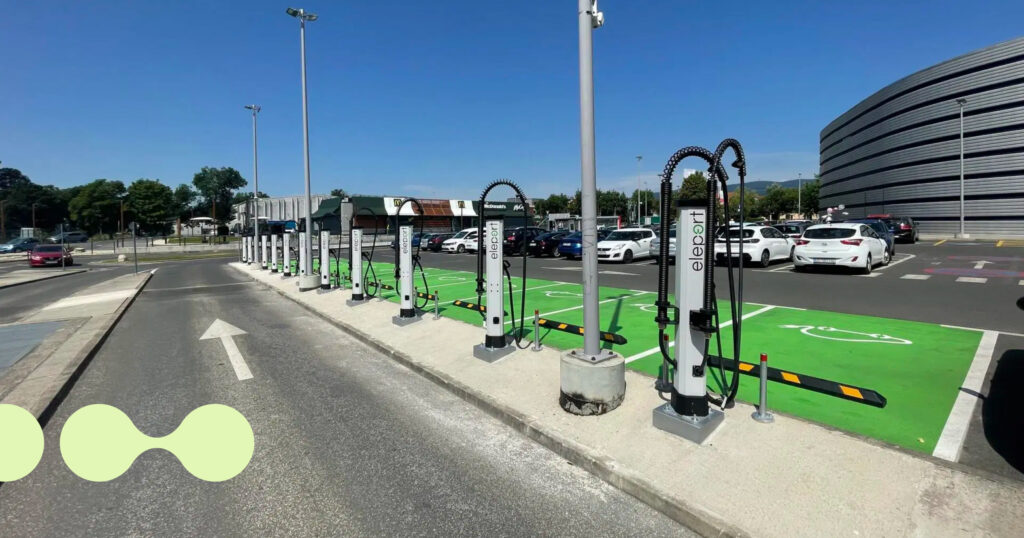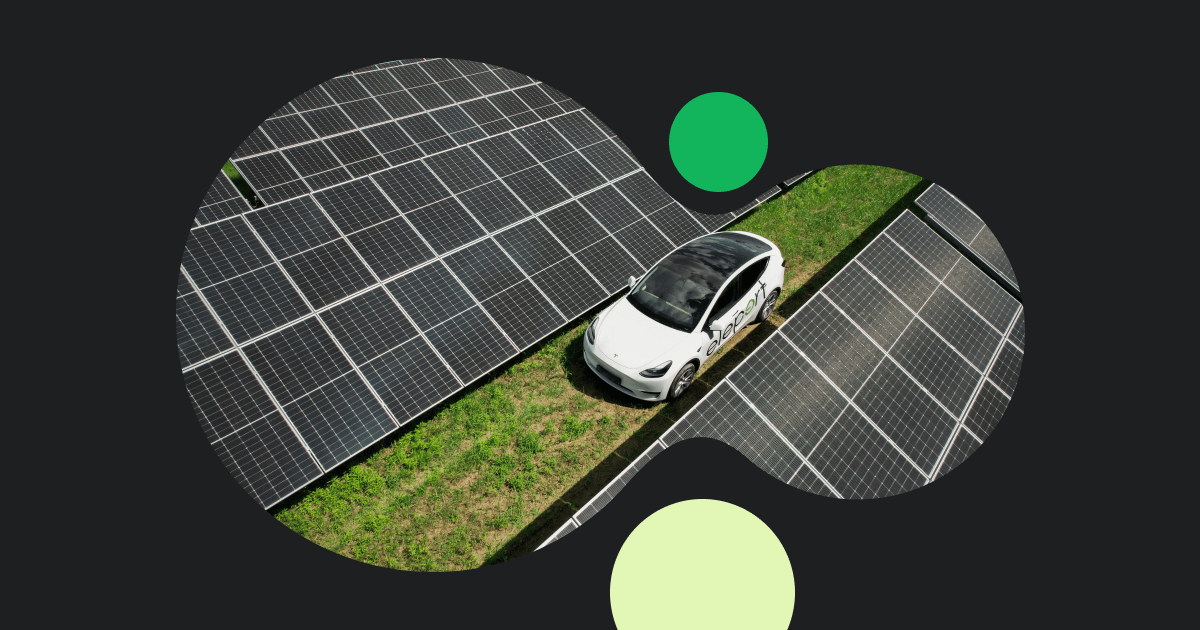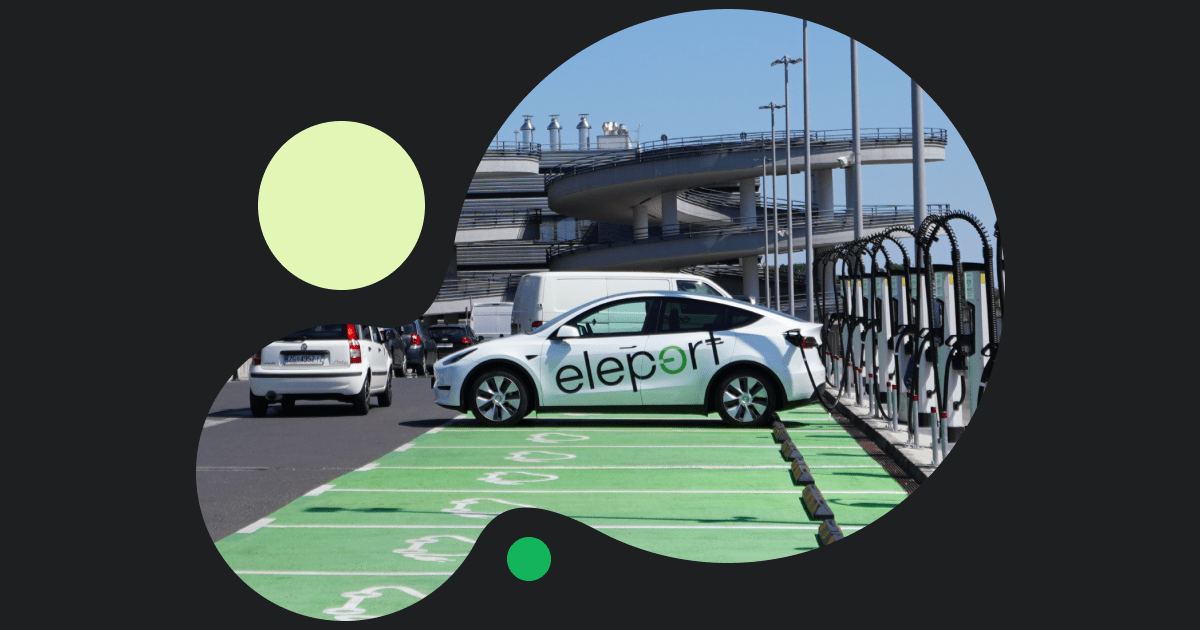Electric vehicles (EVs) have quickly evolved from innovative alternatives to mainstream mobility choices, now standing firmly at the center of Europe’s transport revolution. Per Eleport EV sales research, every 6th car sold in Europe this year is fully electric.
Cities are embracing cleaner, quieter streets, while highways feature sleek, efficient charging stations where petrol pumps used to be. But as electric mobility grows more accessible and appealing, drivers naturally want clarity on a key practical detail: How much does it cost to charge an electric car?
The truth is—it depends. Prices differ across regions, influenced by electricity tariffs, the time of day you charge, and even how fast the charger is. As an EV public charging company, we understand that transparency around costs matters greatly. In this article, we’ll explain clearly what influences charging prices, compare regional differences, and share straightforward tips to help you keep your EV charging expenses manageable and predictable.
The Acceleration of EV Adoption in Europe

Across European cities, the shift is visible—fewer petrol stations, more charging hubs, and record numbers of EVs. Although the rate of EV transition varies per country, the trend across Europe is clear. As internal combustion vehicles phase out, governments introduce strict targets, manufacturers rework supply chains, and drivers embrace an electric future.
Why Are More People Choosing EVs?
More drivers see EVs as a smarter choice, not just an eco-friendly one. In addition to the driving and ownership experience being superior, the stricter emissions policies, tax incentives, and breakthroughs in battery technology make them more practical than ever. With lower maintenance costs, improved range, and a growing charging network, EVs now fit into everyday life with fewer trade-offs and more benefits.
Government and Financial Incentives
Strategic governmental initiatives and attractive financial incentives support Europe’s transition toward electric vehicles, making EVs increasingly appealing to consumers. Although the EU’s Fit for 55 plan initially aimed for all new cars sold by 2035 to be zero-emission, ongoing adjustments demonstrate a flexible approach reflecting market demand and consumer preferences. Rather than being solely regulatory-driven, EV adoption is propelled by advances in technology, governmental support, improving infrastructure, and genuine market interest.
Central and Eastern European nations, including Estonia, Poland, and Croatia, actively encourage electric vehicle ownership through targeted financial incentives:
- Estonia: Estonia offered a substantial subsidy of up to €5,000 for purchasing new electric cars in early 2025 to a total of 1732 EV purchases, significantly lowering the initial investment. The recently introduced car tax is also lower for EVs.
- Poland: Through its “naszEauto” program, it provides grants of up to approximately €9392 for private EV buyers, if also scapping an old ICE vehicle.
- Croatia: To accelerate EV adoption, the country has a limited-funds incentive of up to €9,000 for battery electric vehicle purchase.
Combined with lower maintenance and fuel costs, these incentives have already positioned electric cars as financially viable alternatives to traditional petrol and diesel vehicles, appealing directly to consumer needs rather than regulatory pressure alone.
Battery and Charging Technology
For years, skeptics doubted whether electric cars could compete with petrol vehicles. Would drivers constantly worry about running out of charge? Would long waits at charging stations make road trips impractical?
But the surveys show that range anxiety has been larger for people before buying an EV and has decreased significantly after becoming an EV owner – it has become nothing but an unsubstantiated fear ahead of time.
The fact that battery and powertrain technologies have improved significantly over the past years help to reduce any concerns even further. With advancements in ultra-fast charging, charging networks like Eleport, Ionity and Tesla Superchargers now add 300 km of range in under 30 minutes, which is quick enough that your car is ready before you’ve finished a coffee.
“You might’ve heard the good old “So… how long does it take to charge?” question before. It is one of the most common questions we, as EV drivers get from others about our cars. My answer to this question usually gets people either laughing in disbelief or results in mild shock.
My answer is: “Charging takes about 30 seconds. That’s because, unlike with an ICE car, you only need to plug your car in and then go about your day,” says Jaan Juurikas, an EV industry expert and long-time EV owner.
More Charging Stations
The practicality of electric vehicles directly depends on reliable, accessible public charging infrastructure—a crucial element rapidly improving across Central and Eastern Europe. Recognising the importance of seamless mobility, the EU aims for three million public charging points by 2030, with significant progress already evident in the region:
- Estonia: Known for pioneering EV infrastructure in Eastern Europe, Estonia now hosts one of the densest networks of public charging stations per capita, ensuring convenient access across the country.
- Poland: Accelerating deployment along major highways and urban centers, Poland targets over 20,000 public charging stations by 2025, significantly enhancing convenience for EV drivers on long-distance routes.
- Lithuania and Latvia: Both countries are actively investing in urban and intercity fast-charging networks, strategically addressing the needs of EV drivers without private charging facilities at home.
Just recently, Europe crossed the significant milestone of over 1 million public charging points installed.
As charging infrastructure expands rapidly, concerns about EV practicality are diminishing. Central and Eastern European drivers increasingly benefit from reliable and readily accessible charging options, boosting consumer confidence and fueling further adoption.
Home Charging: Costs, Efficiency, and Practical Considerations
Charging an EV at home can be convenient, but it isn’t always feasible, particularly for urban residents, apartment dwellers, or drivers frequently on the move. Therefore, it’s essential to understand both home and public charging costs to make the most economical decision for your EV ownership.
What does it cost to charge an electric car at home?
Electricity rates for home charging vary across Europe, shaped by national policies, taxes, and renewable energy availability.
- Estonia: €0.17–€0.22 per kWh
- Poland: €0.15–€0.20 per kWh
- Lithuania: €0.17–€0.23 per kWh
Knowing the battery capacity of your EV can give you an idea of the charging costs. For example:
- The cost to fully charge a Nissan Leaf from zero to full (36 kWh battery) would be around 7€ at home.
- The cost to charge a Tesla Model Y (67 kWh battery) would be around 11€ at home, depending on region and prices.
But at the same time, battery capacity does also not directly influence your charging costs, but rather the energy you spend driving – the part of the battery you actually use. And with this, the EV efficiency, energy spent per kilometre driven, plays a bigger role than the battery size itself.
To further reduce expenses, EV owners often utilize off-peak electricity rates (typically 10 PM to 6 AM), which can lower charging costs by 30–50%. On the energy markets that have hourly pricing, EV owners can further reduce costs by using apps that only charge the EV at the lowest priced hours.
A dedicated home wall box (7–22 kW) significantly improves charging speed, delivering a full charge within hours compared to a standard 2.3 kW household socket and a mobile charger, which can take over a day. Homeowners also have the option of generating electricity through solar panels. Although this requires a substantial initial investment, a 5 kW solar setup combined with battery storage can markedly reduce long-term energy expenses. Since a solar installation is usually the most profitable if you are able to use the solar energy yourself rather than selling it to the grid, an EV fits into the system perfectly.
When Public Charging is the Better Option
Home charging isn’t practical for many drivers, especially those without private parking or living in apartments. In such scenarios, public charging networks, such as Eleport offer a reliable and efficient alternative.
Public chargers provide fast, convenient, and predictable charging without upfront installation costs or maintenance responsibilities, making them particularly attractive for drivers who frequently travel or have demanding schedules.
Ultimately, combining public charging solutions with home charging, when possible, offers optimal convenience, efficiency, and cost-effectiveness for EV drivers.
Public Charging: Costs, Variability, and Cost-Saving Strategies

Public charging infrastructure is essential to the widespread adoption of EVs, particularly for drivers without home chargers and those covering long distances. However, the costs associated with public charging can be unpredictable. Public charging prices can fluctuate based on network providers, charger speed, location, and can, in some cases, even change based on the time of day.
How Much Does It Cost to Charge an Electric Car?
Charging providers typically bill per kilowatt-hour (kWh), but connection fees, session duration, and membership discounts can also affect the final price. So, what is the average cost to charge an electric car at public stations? Here’s a breakdown:
- Slow AC Charging (3.7–11 kW) – common in city centres, residential areas, and workplaces, usually as a wall-mounted charging box. Charging a 50 kWh battery fully takes 5 to 12 hours. Costs are usually €0.15–€0.35 per kWh.
- Fast AC Charging (22 kW) – common in retail locations and some workplaces, also usually deployed as wall-mounted chargers or as chargers on pedestals, these reduce the charge time, but cost slightly more. A full charge can take 2 to 4 hours. Cost: €0.25–€0.45 per kWh. However, note that most EVs are only able to charge at up to 11 kW in these, as the onboard charger rarely supports 22 kW.
- DC Fast Charging (50–150 kW) – typically found along motorways or in larger charging hubs, allowing for fast charging for most of the battery in 30 to 60 minutes. Cost: €0.30–€0.60 per kWh.
- Ultra-Fast Charging (150–350 kW) – the fastest option, delivering 80% charge in just 15 to 30 minutes. Ideal for long trips but comes at a premium. Cost: €0.40–€0.90 per kWh.
How to Reduce Public Charging Costs
While public charging can be expensive, smart planning can help minimise costs. Here are a few strategies to make EV charging more affordable:
- Subscribe to Membership Plans. Many charging networks, like Ionity, Tesla, Eleport, and others, offer reduced per-kWh rates for monthly members. Frequent users can cut charging costs by up to 50% with a subscription.
- Plan Your Routes Wisely. Tools like the Eleport EV charging station map help identify cost-effective electric car charging stations, enabling you to avoid high-demand locations and premium-priced stations along busy routes.
- Utilise Free Charging Opportunities. Are EV charging stations free in certain locations? Yes. Some shopping centers, hotels, restaurants, and workplaces offer complimentary or discounted charging stations as a benefit to attract customers or support employees.
How Much Does it Cost to Fully Charge an Electric Car?
The cost to charge an electric car can be simplified using a straightforward formula:
Charging Cost = (VR / RPK) × CPK
Where:
VR (Vehicle Range): Total distance driven (in km).
RPK (Range per kWh): Distance covered per kWh (typically 5–6 km for efficient EVs, lower for less efficient models).
CPK (Cost per kWh): Electricity cost per kWh (varies by country and charging location).
Example Calculation Of Real EV Charging Cost
Let’s say you drive 2,000 km per month. Using an average efficiency of 6 km per kWh (16.7 kWh per 100 km), your monthly electricity consumption would be:
2,000 km ÷ 6 km/kWh = 333 kWh needed
If your home electricity rate is €0.20 per kWh, the cost would be:
333 kWh × €0.20 = €66.6 per month
Higher speeds often reduce efficiency for road trips, which can reduce range to ~5 km per kWh (20 kWh per 100 km). Let’s calculate an example of public DC fast charging at Eleport stations, which starts at 0.39€ per kWh.
2,000 km ÷ 5 km/kWh = 400 kWh needed
400 kWh × €0.39 = €156 per month
This comparison highlights the significant cost savings of home charging versus public fast charging. To simplify these calculations, drivers can use an EV charging cost calculator to estimate expenses based on location, electricity rates, and driving habits.
Country-specific cost to charge an electric car: A European breakdown
Electricity pricing remains highly variable across European markets, shaped by taxation, grid stability, and reliance on renewables. Below is a comparative analysis of the price to charge an electric car:
| Country | Electricity Cost (€/kWh) | Public Charging (€/kWh) |
| Estonia | €0.18 – €0.22 | €0.30 – €0.55 |
| Poland | €0.15 – €0.20 | €0.35 – €0.65 |
| Hungary | €0.16 – €0.23 | €0.35 – €0.60 |
| Lithuania | €0.17 – €0.24 | €0.30 – €0.55 |
| Latvia | €0.17 – €0.25 | €0.30 – €0.55 |
As regional investments in renewable energy and charging infrastructure continue to grow, the cost to charge an electric car is expected to stabilise or decrease, further enhancing driver affordability.
Long-Term EV Charging Costs: A Deeper Look

While charging costs are a key consideration for EV owners, they are just one part of the bigger financial picture. Understanding how much does it costs to charge an electric car over time requires factoring in driving habits, charging frequency, and overall vehicle ownership expenses.
How Daily Driving Patterns Affect Charging Costs
Switching to an EV can lead to substantial savings on fuel. On average, an EV owner saves €950 per year compared to driving a petrol-powered vehicle. Over a typical ownership period, these savings can accumulate to between €5500 and €9500. However, the total cost of charging varies based on several factors:
- Daily Distance Driven: The average European driver covers 58 km daily, so even just home charging meets the needs of most EV owners.
- Traffic and Driving Conditions: Cold weather and high-speed driving can reduce efficiency, leading to more frequent charging and slightly higher costs.
- Home vs. Public Charging: While 80% of EV owners primarily charge at home, public charging remains essential for longer trips, and its higher cost can impact overall expenses.
The Total Cost of EV Ownership: Charging, Maintenance, and Incentives
One of the biggest financial advantages of EVs is their lower maintenance costs. With fewer moving parts and no need for oil changes or complex engine repairs, EVs cost significantly less to maintain over time.
A breakdown of typical ownership costs over five years:
- Routine Maintenance (Wipers, Tire Rotations, Brake Pads, etc.): €4,200
- Repairs (Battery Cooling System, Electrical Components, etc.): €1,700
- ICE Vehicle Maintenance Costs for Comparison: €4,500 (expected to rise as repair costs increase)
However, charging habits can affect long-term ownership costs. Frequent DC fast charging and exposure to extreme temperatures can accelerate battery degradation, leading to a 3–9% loss in capacity over 80,000 km. Since battery replacements are one of the most expensive EV repairs, prioritising Level 2 charging at home whenever possible helps preserve battery life and reduce long-term expenses. We go over the best charging habits to keep the battery healthy in our recent research article.
Future of EVs: The Road Ahead, Supercharged
As the industry pivots towards sustainability, efficiency, and convenience, three critical factors will dictate the next phase of the EV revolution: breakthroughs in battery technology, the evolution of charging infrastructure, and intelligent policy intervention.
1. The Battery Race: Faster, Lighter, and Smarter
The past decade focused on improving lithium-ion efficiency; the next will redefine what EV batteries can achieve.
- Solid-State Batteries – This technology, with its higher energy density, faster charge times, and no risk of thermal runaway, is a step forward from conventional lithium-ion batteries. Some manufacturers claim solid-state cells could double range and cut charging time in half, but here’s the catch: producing them at scale remains an engineering and economic challenge. Whoever cracks mass production first will reshape the entire EV industry overnight. We are seeing new developments in semi-solid and solid-state batteries, but real-world adoption in mass-market EVs is not happening yet today.
- Sodium-Ion Batteries – Lithium and cobalt have dominated battery production for years, but that dominance comes at a cost, both financially and geopolitically. While LFP batteries, which have signficiantly risen in EV usage also in Europe recently, already reduce the cobalt and nickel needs, the upcoming Sodium-ion batteries take it further by eliminating further need for scarce materials, reducing costs and supply chain risks. China has already launched commercial sodium-ion battery production, forcing European automakers to respond quickly.
Advancements in current NCM and LFP batteries. With each generation of battery deployments, we are seeing battery makers and automakers jointly pushing the boundaries of what is possible. The batteries going into our EVs today are far more advanced in efficiency, durability and cost, compared to what we had ten or even five years ago. 2. The Charging Revolution: Goodbye, Cables?
A larger charging network requires more than additional stations. t requires effortless access, full coverage, and ultra-fast power delivery. New advancements include:
- Ultra-Fast Charging (350 kW+) – High-speed charging hubs across Europe are increasingly delivering higher charging speeds, like adding 300 km of range in under 10 minutes, reducing wait times to nearly the same as refueling a petrol car.
- Wireless Inductive Charging: Pilot projects in Central and Eastern Europe, notably in Poland and Estonia, explore wireless charging technology, enabling EVs to recharge effortlessly while parked. Some projects even try to charge the EVs in motion.
- AI-Optimized Charging – AI-driven systems will dynamically adjust charging speeds based on grid demand and energy pricing, preventing peak-hour price spikes and reducing grid strain. Reliability of the charging stations is also improved thanks to AI-powered predictive maintenance.
3. Policy and Infrastructure: Governments Step on the Accelerator
Even the most advanced technology won’t matter if adoption remains slow. That’s why European governments are removing obstacles and making EVs impossible to ignore.
- Mandatory Charging Access across Europe – The EU’s AFIR regulation requires fast chargers every 60 km, eliminating range concerns for long-distance travel.
- Smarter Energy Grids –As millions of EVs plug in, investment in renewable energy storage and vehicle-to-grid (V2G) systems will allow cars to feed power back into the grid, reducing electricity demand peaks.
- Financial Incentives: Countries across Central and Eastern Europe, including Estonia, Poland, and Croatia, are demonstrating how targeted subsidies, tax exemptions, and direct purchase grants significantly reduce EV upfront costs, making electric vehicles economically competitive compared to petrol cars.
Conclusion
EVs have moved past the experimental phase. The tipping point has arrived with better batteries, expanding infrastructure, and government-backed incentives. For those still debating the switch, the question is no longer “Are EVs practical?” but rather “How soon will petrol cars become obsolete?”



